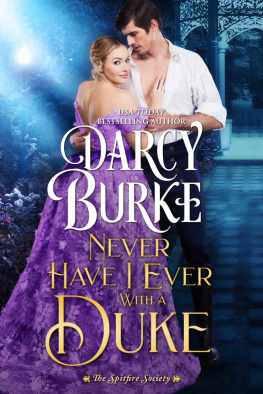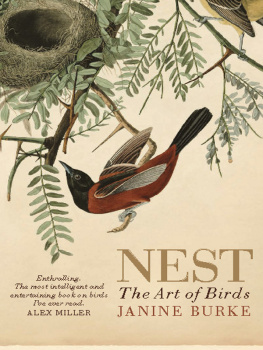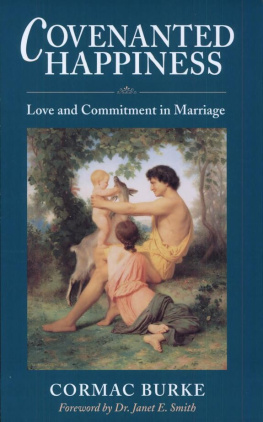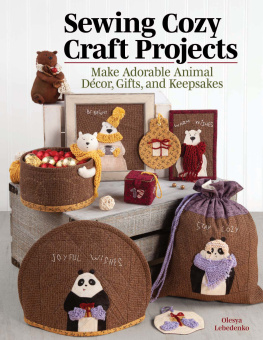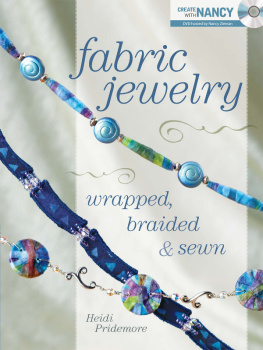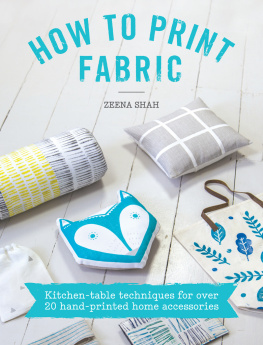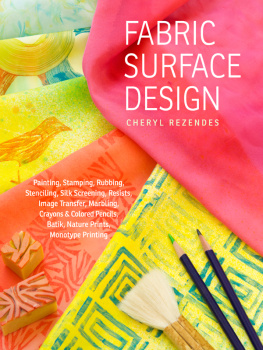Dedication
This book is dedicated to my mom, who taught me that anything can be made by hand, who had the patience to teach me how to sew, who took me to craft supply stores at an early age, who showed me how to use a glue gun, and who taught me how to clean spilled paint off the rug. Thank you for always encouraging me to draw, paint, and create, thank you for supporting my crazy ideas even when they didnt make sense, and for helping me think of more crazy ideas. Thank you for being such a powerful example of a strong and creative woman. You are my muse.
Acknowledgments
A huge thank you to my editor, Elaine Lipson, for the support, attention to detail, understanding, and most of all, for taking my words and transforming them into something wonderful. Thank you to Rebecca Campbell, Lee Calderon, Liz Quan, Joe Coca, and the entire Interweave teamI am forever grateful that all of you believed in my wild and crazy ideas and helped to make them real.
Thank you to my husband, Andy, who gives me time to myself, space to create, freedom to make a mess, and the encouragement to follow my dreams. Thank you to my family, who continue to love, support, and inspire me each and every day. All of you rock my world!

Contents
I WAS EIGHT YEARS OLD when my mom taught me how to sew. I remember sitting next to her at the table as she showed me how to thread the needle and insert the bobbin. I listened to her explanations of how to follow a pattern; I remember stretching my short legs under the table to the pedal, apprehensively pushing down, slowly guiding fabric through the machine as she looked on and gently encouraged me.
I also remember getting frustrated, crying, losing my temper, struggling with focus, and straining to understand patterns. While I have fond memories of the time spent bonding with my mom, I dont have fond memories of the processbecause back then I hated sewing. Measurements gave me anxiety, patterns made no sense, following directions left me frustrated, and I just didnt seem to have the patience that was required to follow the steps and finish a project.
After a few years of trying, of failed projects, of more frustration and annoyance, I gave up and ditched sewing. I went on to pursue art, which was my true passion. I took drawing lessons, spent hours in art classes, and studied fine art in college. I fell in love with being an artist, with learning all that I could. I studied different mediums and developed my own style. I was painting, drawing, printmaking, carving, molding, and getting my hands in anything and everything that was creative. I discovered my creative process.
FROM FRUSTRATION TO FREEDOM
And then one day (insert twenty years) I rediscovered sewingbut this time it was on my terms. After all those art classes, discipline, and time spent understanding my learning style and developing my creative voice, I suddenly had the desire and the mindset to try to sew again. I bought a cheap sewing machine and spent the first few weeks getting reacquainted with my old nemesis. Instead of giving in to frustration, I decided to treat the process as I treated all of my other creative learning. I let myself play and have fun, I gave myself permission to fail, I broke rules, I lost myself in experimentation.
By the end of those few weeks, I was smitten with sewing and couldnt quite remember why I ever gave up on it. Before I knew it, I had developed my own sewing style that was rooted in making art. It wasnt about following steps or patternsit was about being messy, expressive, and wild. I began stitching on painted canvas, creating my own fabrics, and designing all kinds of funky projects and accessories.
These days, my sewing machine is just as important as my pens, brushes, and paint. Its a tool that has completely changed my concept of art, and I continue to find new and creative ways to integrate sewing with alternative materials and projects. I use my sewing machine to draw, make marks, create texture, journal, and build compositions. I use it to make accessories and assemble art, to attach things, create layers, establish color, and so much more. I now see that those early years of failed sewing projects and frustration were necessary in my journey. They paved the way for me to discover how great it feels to break free and go wild.

HOW TO USE THIS BOOK
This book is all about my style, my process, and my messy and wild approach to sewing. Whether you are a beginner or a seasoned pro, my goal is to inspire you to look at fabric, alternative materials, and sewing in a different way. I want to break down the stigma that often goes along with sewingthat its scary, that there are rules to follow, that you have to be technical and always use a pattern. Instead I want to encourage you to experiment, find your style, embrace mistakes, be messy, let loose, and explore.
This book has a variety of techniques and ideas that can be used alone or mixed together. You wont find lots of technical or traditional information in Sew Wild, but you will find simple concepts and techniques that have inspired me to break free with my own sewing. Ill introduce you to my favorite tools and materials, along with information on using color and pattern and finding inspiration. Then Ill share techniques for creating your own fabric and altering materials, together with the basics of wild stitching. Finally, Ill bring all of the techniques and concepts together in a group of simple sewing projects. My hope is that Sew Wild will provide an inspiring foundation for ideas that can be altered to fit your own imagination.

I AM A FIRM BELIEVER IN SIMPLE SUPPLIES. In my creative life I dont have time to search for specialty products; I dont have the money to purchase lots of supplies; and to be honest, my studio is already overflowing with perfectly usable things. Most of the techniques and projects in this book make use of very basic supplies and the techniques allow for plenty of flexibility, so you can put your own twist on them. To get started creating, make sure you have enough supplies on handyou never know when creativity will strike!
Surface Design Tools
When Im creating, I always make sure that I have plenty of tools that Im comfortable using. Often I splurge on one or two favorite itemsmaybe a special brush or set of fabric markersand then challenge myself to be creative and simple with everything else that I have.

An array of simple but versatile tools for surface design.
MARKERS AND PENS
Pens and markers are very versatile tools for decorating fabric. I use both permanent markers, such as Sharpies, and pens and markers designed for use on fabric. Most markers come in a variety of colors, and while my color preference is typically black, I always recommend keeping a variety of favorite colors on hand. Markers also come in different sizes and a variety of tips. Keeping a selection of markers with small, medium, and large tips on hand will make the creative process easy.


